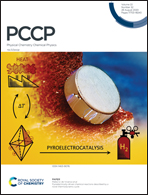Chemically directed structure evolution for crystal structure prediction
Abstract
We present a new method of evolving crystal structures for crystal structure prediction. The method of chemically directed structure evolution uses chemical models to quantify the environment of atoms and vacancy sites in a crystal structure, with that information used to inform how to modify the structure to make a move on the potential energy surface. We have developed a method of chemically directed swapping, where we swap atoms in the least favourable chemical environments. This method has been implemented in the crystal structure prediction code ChemDASH (Chemically Directed Atom Swap Hopping), which explores the potential energy surface using a basin-hopping approach, and evaluates chemical environments using either the bond valence sum or electrostatic site potential. ChemDASH has a variety of methods of initialising structures, optimising structures, and swapping atoms. This gives ChemDASH the flexibility to be applied to a wide range of systems. We used ChemDASH to examine the effectiveness of the directed swapping method. Directed swapping finds the ground states of TiO2 and SrTiO3 faster than random (non-directed) swapping, but is less effective than random swapping for Y2Ti2O7.



 Please wait while we load your content...
Please wait while we load your content...